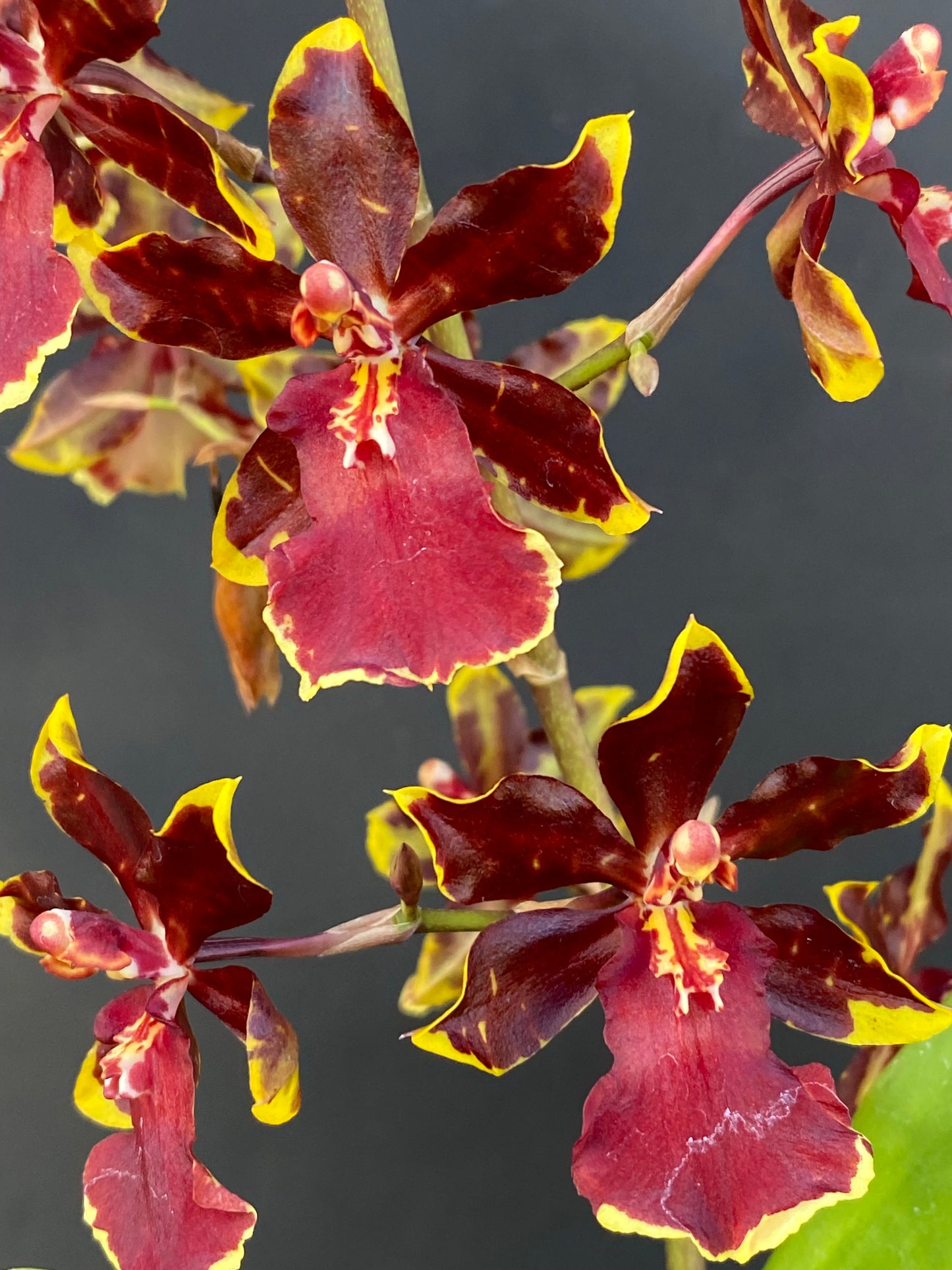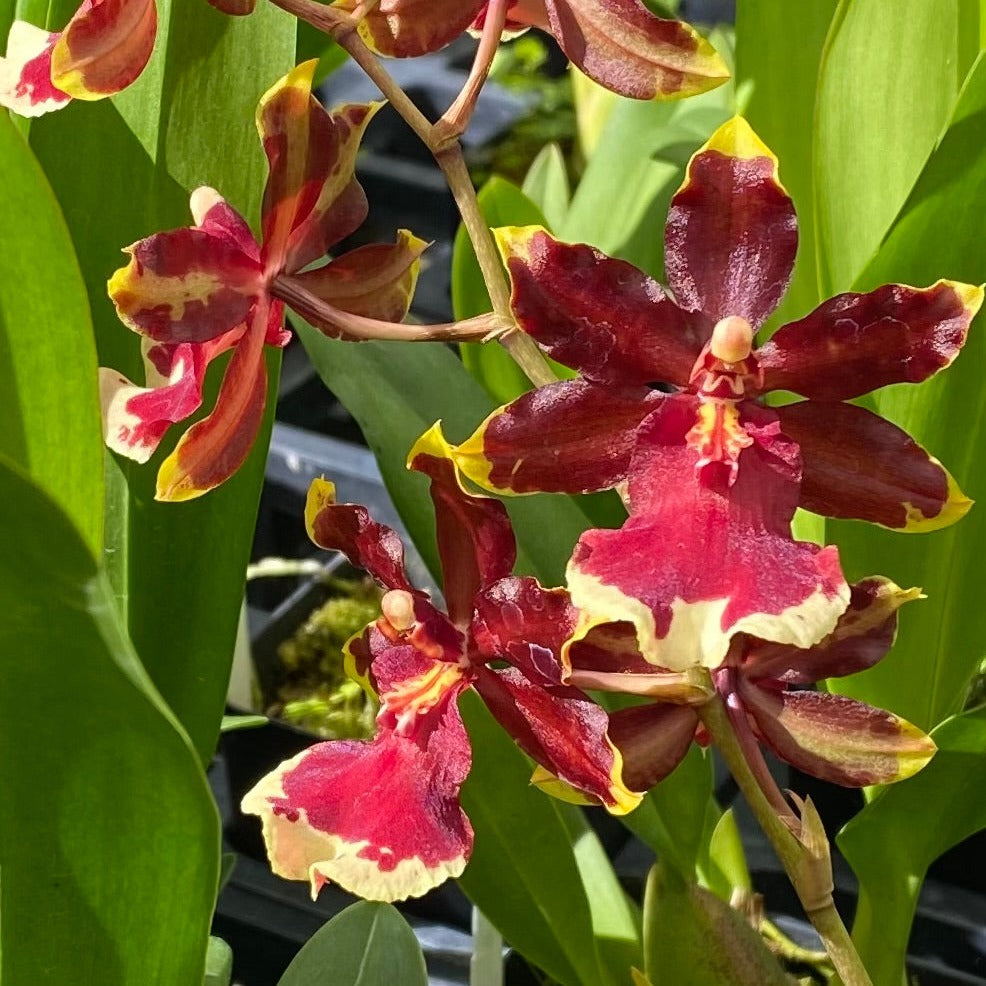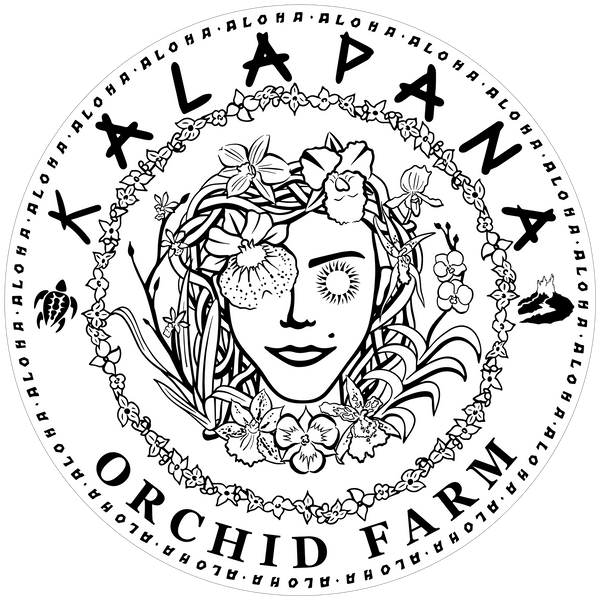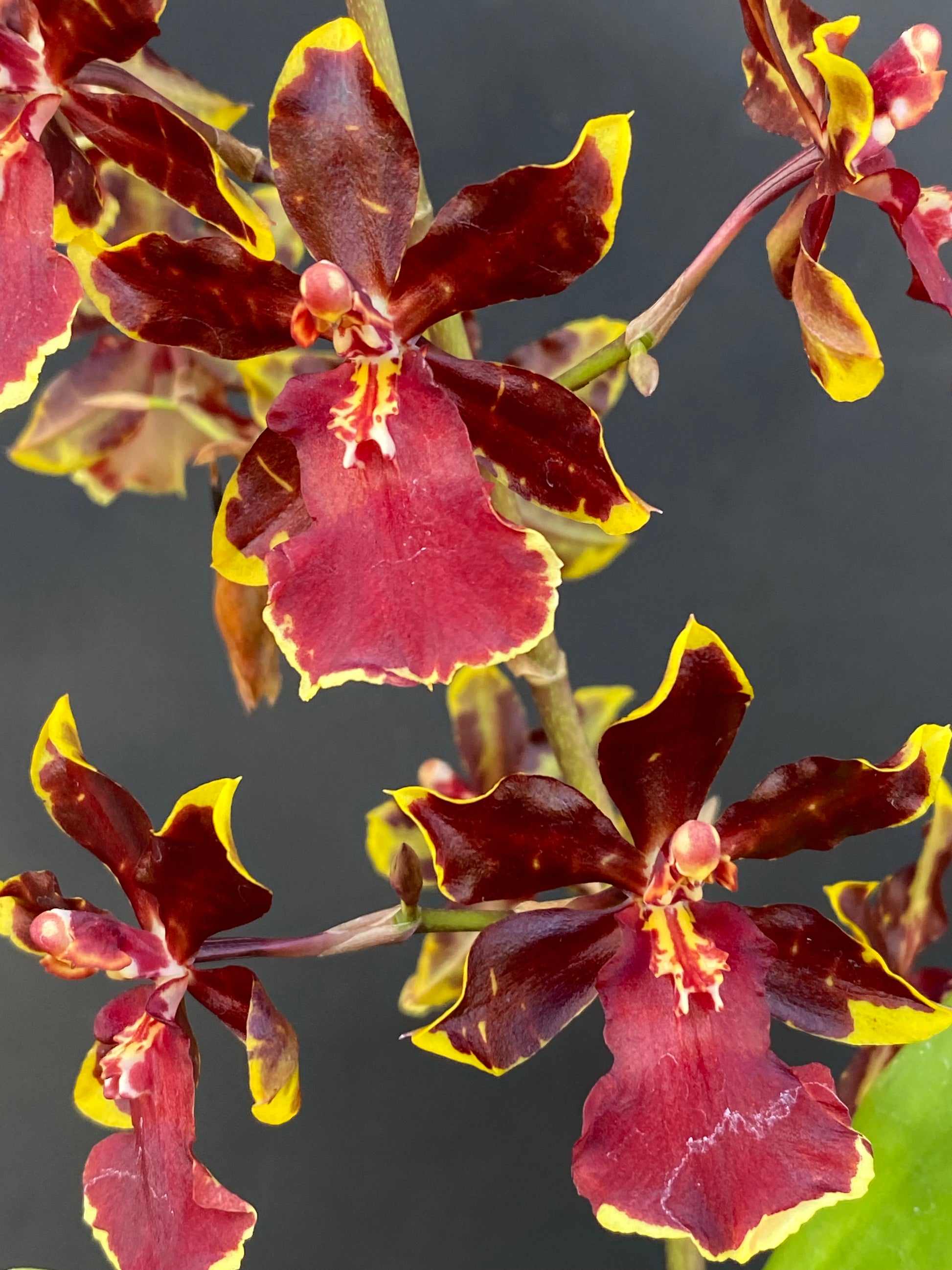Kalapana Orchid Farm
Oncostele Wildcat 'Golden Red Star'
Oncostele Wildcat 'Golden Red Star'
Couldn't load pickup availability
This hybrid is a complex mix of wonderful orchids, officially known as Oncostele Wildcat, a cross between Oncostele Rustic Bridge and Oncidium Crowborough, registered back in 1992. But its story starts high in the mountains of Central and South America. Let's unpack the family tree a bit. A significant portion of its genetic makeup, a solid 75%, comes from three key species: Oncidium fuscatum, Rhynchostele uroskinneri, and Oncidium leucochilum.
Oncidium fuscatum hails from countries like Colombia, Ecuador, and Peru, growing on trees at elevations between 2,000 and 3,900 ft. It's accustomed to consistent moisture and intermediate to warm temperatures. Then we have Rhynchostele uroskinneri, a cool-growing orchid from the mountains of Guatemala. You'll find it clinging to rocks, and sometimes trees, in moist, mixed forests between a lofty 5,900 and 7,200 ft. This parentage lends a tolerance for cooler nights. Rounding out the primary trio is Oncidium leucochilum, found in Mexico, Guatemala, and Honduras. It resides in forests up to 6,500 ft., enjoying cool to intermediate conditions. This diverse mountain heritage is what makes the Wildcat so adaptable.
The result of this lineage is a truly impressive display. The 'Golden Red Star' cultivar is known for its commanding, branched flower spikes that can soar to over 3 ft. tall, each capable of presenting more than 50 blooms. The flowers themselves are about the size of a half-dollar. They feature a dramatic, deep velvety red across the petals and sepals, with the very tips playfully dipped in a vibrant golden yellow. The contrast is quite striking. While some 'Wildcat' clones are fragrant, this one is primarily a feast for the eyes.
The plant itself has a robust and pleasing structure. It produces distinctively plump, round to ovoid pseudobulbs that serve as its water and energy reserves. From the top of each pseudobulb emerge one or two leaves. These leaves are lanceolate, or spear-shaped, with a leathery texture and a healthy, medium-green color. A well-grown plant forms a handsome clump, with each new growth capable of producing one to two of those spectacular inflorescences, typically blooming in the spring and fall.
Care Instructions
Light: Provide bright, indirect light. An east-facing window with morning sun is ideal. Avoid direct, intense sunlight, which can scorch the leaves. Leaves should be a light, grassy green; dark green indicates insufficient light.
Water: Water thoroughly, allowing the potting medium to approach dryness before watering again. Plants with plump pseudobulbs are indicating they are well hydrated. Wrinkled pseudobulbs can be a sign of dehydration. Use room-temperature water.
Temperature: This hybrid is adaptable, thanks to its diverse ancestry. It thrives in intermediate temperatures, with daytime ranges of 65–80°F and nighttime lows between 55–65°F. It can tolerate cooler and warmer temperatures for short periods if humidity and air circulation are good.
Humidity: Prefers humidity levels between 50% and 70%. In drier environments, using a humidifier or placing the pot on a tray of water and pebbles (ensuring the pot does not sit in the water) can be beneficial.
Potting Medium: Use a well-draining orchid mix. A medium-grade fir bark mix with perlite and charcoal is an excellent choice. Repot every one to two years, or when the potting medium begins to break down. The best time to repot is when new root growth is visible.
Grown in 4" pots.
Share






